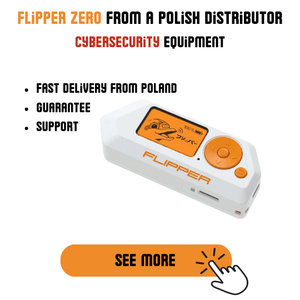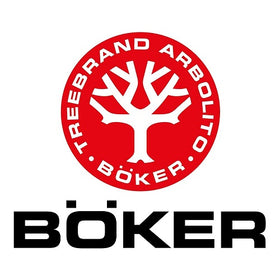
RFID system - what is it and how does it work? Compare different tags and cards
RFID is simply radio frequency identification. RFID comes from Radio-Frequency Identification . This technology is used in everyday life (including access control, trade and contactless payments). From this post you will learn, among others how RFID works. In the article, we will compare RFID tags ( types of tags) with different frequencies and discuss the security of physical and virtual payment cards. We will also x-ray structure of the RFID antenna .
RFID - how does work?
The radio frequency identification system provides the ability to quickly read and transmit data. Thanks to the use of radio waves, it is also possible to power the electronic system ( RFID tag ), which is the object's label, so that can be used to identify object without contact. the reader. RFID tags are used, among others in goods inventory systems. Data can be read, transmitted and changed by radio, even from a long distance. How big? The necessary read range depends on:
- antenna used in the cartridge,
- type RFID reader ,
- frequency bands (the most popular are 125 kHz and 13.56 MHz, but there are also e.g. 860 - 956 MHz).

Structure of of the RFID system
The most basic RFID system consists of two electronic circuits: a reader and a transponder (called a tag, and sometimes RFID tag ).
- The RFID reader comprises a frequency generator, a resonant circuit with a coil that is both an antenna and a voltmeter that indicates the voltage in the detector (resonant circuit).
- Transponder (tag or RFID tag ) consists of a circuit that is tuned to the signal frequency of the reader and the microprocessor. The transponder and antennas of the RFID reader are at a distance from each other, but in such a way that both coils can be magnetically coupled to each other. In this article, we will use the terms transponder, tag, and tag interchangeably.
The reader is the central and active element. It includes a radio wave transmitter and receiver. Such RFID reader can be a standalone device or can be connected to a central controller (e.g. a computer with a special expansion card and software). The tag is an integrated circuit that works with a special antenna. In a nutshell: after the tag is brought closer to the reader, the antenna begins to receive a carrier wave which is cyclically transmitted from the reader.

RFID - examples uses
RFID accompanies us every day in various areas of life. You can find objects by means of radio waves, for example, in the changing room at the swimming pool (access to lockers with rubber, waterproof watches), in shops (marking the goods) or during sports events (e.g. time measurements at running competitions). Everywhere there is just RFID. The use of this technology is therefore really wide. Readers for proximity cards and RFID tags have also become very popular in residential buildings at one time.
Here are the most popular examples of using RFID :
- trade (RFID allows, among others,protect goods against theft, carry out an inventory, locate the assortment in given zones, monitor the current stock level);
- access control (working time control, admission or limitation of people's access to selected locations and machines, traffic management, parking systems);
- mobile devices (contactless payments, information transfer between devices)
The use of RFID is obviously associated with a number of risks, eg the risk of unwanted reading of data. For this reason, many people like to use e.g. RFID wallets or RFID protection and NFC Blocker . There are also tools (ie ChameleonTiny ) that can be used to assess security in RFID and NFC environments in various attack scenarios.

Standards RFID systems - frequency overview
There are several standards for RFID systems. The division takes place due to the frequency of operation.
Frequency 125 kHZ
On operating frequency (125 kHz) a system called Unique works. Hitag is a similar system.
- They have a simple structure and short range passive tags (a few cm).
- Slow data transmission: from 2kb / s (Unique) to 4kb / s (Hitag).
- Data is not authenticated and is not protected in any way. When the card is within range of the reader, it immediately starts transmitting a signal.
- In such systems a tag is simply applied to the reader (opening doors, cabinets, employee registration).
- Low level of security (easy to copy and read the card from someone's pocket).
Frequency 13.56 MHz
Mifare and NFC systems work on at 13.56 MHz . They can work with passive transponders, but also with active tags, exchanging data with each other, which already creates great opportunities. Of course, active tags need a separate power supply.
- The transmission speed is 800 kbps. Use of complex protocols.
- Operating range - 1 m (Mifare), 20 cm (NFC).
- High noise immunity.
- RFID systems on this frequency support encryption, authentication and cryptography.
- Example application: credit card service, anti-theft systems in trade, ticketing applications, telephone payments.
- High security.
Frequency 860 - 956 MHz
There are also latest generation RFID systems operating at the highest frequencies (range from 860 MHz to 956 MHz). However, we will not describe them more broadly here. We will only list the main features, which include:
- range - more than 20 m,
- high speed data transfer,
- ability to read multiple tags simultaneously in a short time.
What do RFID transponders look like ?
Transponders (tags or RFID tags ) can be of the following form:
- thinner and thicker cards,
- fobs,
- coins,
- stickers,
- rings
- wristbands.
They can also be very discreet, small and flexible adhesive strips or those that are sewn onto clothing tags
Looking only at the casings of the tags, it is impossible to distinguish on which frequencies or protocol the tag operates. Especially since manufacturers often use a similar or identical type of housing for different types of RFID fobs that operate at different frequencies. On the outside, the tag may look very similar on the outside, but be completely different on the inside.
How to distinguish low frequency and high frequency RFID tags ?
Instead of guessing at what frequency a given RFID tag works, you can x-ray its antenna. Literally hold the card against the lamp and shine light through it. Low-frequency markers (125 kHZ) are characterized by RFID antenna made of thin wire. But beware: this antenna usually has a large number of turns and can therefore appear to be a solid piece of metal. High frequency cards (13.56 MHz) have a much smaller number of thicker turns and visible gaps between these turns.

Security of virtual and physical bank cards
Low frequency tags are easy to read, save and clone to a new card or export for analysis. A device that allows, among others RFID tag emulation is Flipper One . However, it can do this for both high frequency tags! So what does bank card security (in physical and virtual form) look like in this case ?
- On virtual bank cards, when we pay with a smartphone, the mechanism for changing the UID works. What is it about? The way this works is that every time you read a card with the Flipper, the UID number changes. As a result, someone from the outside is not able to match the transaction to our bank card. The name of the virtual card holder is also unavailable.
- In the case of physical bank cards, after tag emulation, it is possible to make an online payment (if the expiry date and card number are known) and sometimes the name and surname of the cardholder are also available.
The virtual card therefore provides less information and is safer for offline payments.
Follow our Instagram: LINK
.


